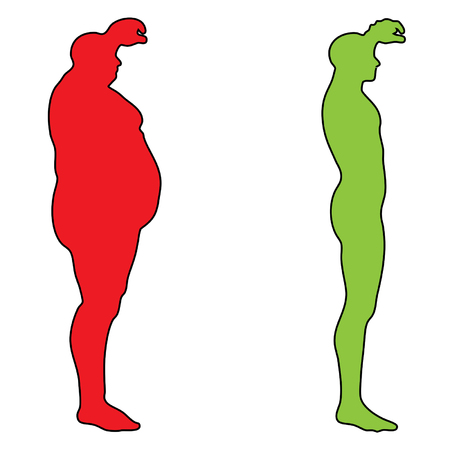1. Understanding Anxiety: Beyond the Mind
What Is Anxiety?
Anxiety is more than just feeling nervous or worried from time to time. It’s a group of mental health conditions that can impact daily life, relationships, and even physical health. People with anxiety disorders often experience intense, persistent fear or worry about everyday situations. These feelings can be overwhelming and may interfere with work, school, or social activities.
Anxiety Disorders in the U.S.
In the United States, anxiety disorders are among the most common mental health challenges. Millions of Americans live with some form of anxiety. Here’s a quick look at how common these conditions are:
| Anxiety Disorder | Estimated Number of Adults Affected (U.S.) |
|---|---|
| Generalized Anxiety Disorder (GAD) | Over 6 million |
| Panic Disorder | About 6 million |
| Social Anxiety Disorder | About 15 million |
| Specific Phobias | Over 19 million |
The Link Between Mental and Physical Health
Anxiety doesn’t just affect your thoughts and emotions—it can show up in your body, too. For example, people with anxiety might have headaches, stomach problems, or trouble sleeping. This connection between mind and body means that taking care of your physical health through nutrition and lifestyle choices can also help support your mental well-being. In other words, what you eat and how you live each day play an important role in how you manage anxiety.
2. Nutrition’s Role in Mental Wellness
How What You Eat Affects How You Feel
In recent years, researchers have found strong links between nutrition and mental health, especially when it comes to anxiety. What you put on your plate can directly influence how your brain works, your mood, and even how well you cope with stress. Let’s break down what current science says about dietary choices and their impact on anxiety recovery.
The Power of Macronutrients
Macronutrients—carbohydrates, proteins, and fats—are the major nutrients your body needs to function. Each plays a unique role in supporting your mental wellness:
| Macronutrient | Role in Mental Health | Examples of Healthy Sources |
|---|---|---|
| Carbohydrates | Boost serotonin (the “feel-good” hormone), stabilize mood | Whole grains, oats, brown rice, sweet potatoes |
| Proteins | Provide amino acids for neurotransmitter production (like dopamine and serotonin) | Lean meats, eggs, beans, lentils, Greek yogurt |
| Fats | Support brain structure; Omega-3s help reduce inflammation and anxiety symptoms | Salmon, walnuts, chia seeds, avocados, olive oil |
The Importance of Micronutrients
Micronutrients are vitamins and minerals that may be small in quantity but big in impact. Some key micronutrients linked to lower anxiety levels include:
- B Vitamins: Especially B6, B9 (folate), and B12 support brain health and energy.
- Magnesium: Known as nature’s relaxant; low levels are linked to increased anxiety.
- Zinc: Plays a role in regulating the brain’s response to stress.
- Vitamin D: Often called the “sunshine vitamin,” it can help regulate mood.
Quick Guide: Foods Rich in Key Micronutrients
| Nutrient | Main Benefits for Anxiety Recovery | Top Food Sources |
|---|---|---|
| B Vitamins (B6, B9, B12) | Mood regulation; supports energy production in the brain | Leafy greens, eggs, chicken, fortified cereals, beans |
| Magnesium | Aids relaxation; calms nervous system activity | Pumpkin seeds, almonds, spinach, black beans, dark chocolate |
| Zinc | Helps manage stress response; boosts immune system support for the brain | Oysters, cashews, chickpeas, beef, yogurt |
| Vitamin D | Mood improvement; helps fight depressive symptoms | Fatty fish (salmon), mushrooms exposed to sunlight, fortified milk or orange juice |
The Big Picture: A Balanced Approach Matters Most
No single food or supplement is a magic bullet for anxiety recovery. The best approach is eating a variety of whole foods from all food groups. Making small changes—like adding more vegetables or swapping white bread for whole grain—can make a real difference over time. Remember: nourishing your body is an important part of supporting your mind.

3. Lifestyle Factors: Exercise, Sleep, and Social Connections
The Role of Movement in Anxiety Recovery
Physical activity is more than just a way to stay fit—it’s a powerful tool for managing anxiety. In the United States, people often turn to activities like walking in their neighborhood, joining local gyms, or participating in group fitness classes such as yoga or Zumba. Regular movement helps release endorphins, which are natural mood lifters. Even a 20-minute walk around the block can make a noticeable difference in how you feel.
Common Types of Movement for Anxiety Relief in the U.S.
| Type of Activity | Frequency | Benefits for Anxiety |
|---|---|---|
| Walking or Jogging | 3-5 times a week | Boosts mood, reduces stress |
| Yoga or Pilates | 2-3 times a week | Calms mind, improves focus |
| Team Sports (Basketball, Soccer) | 1-2 times a week | Builds social support, increases motivation |
| Dancing (Zumba, Hip-Hop) | 1-2 times a week | Makes exercise fun, lifts spirits |
The Importance of Sleep Hygiene
Good sleep is essential for mental health and anxiety recovery. Many Americans struggle with sleep due to busy schedules or screen time before bed. Practicing sleep hygiene—like keeping a consistent bedtime, limiting caffeine late in the day, and creating a calming nighttime routine—can help your body and mind recover from daily stress.
Tips for Better Sleep Hygiene
- Go to bed and wake up at the same time every day—even on weekends.
- Avoid screens (phones, TVs, computers) at least 30 minutes before bedtime.
- Create a relaxing bedtime ritual—like reading or listening to soft music.
- Keep your bedroom cool, dark, and quiet.
- Avoid heavy meals and caffeine close to bedtime.
The Value of Social Connections in the American Context
Supportive relationships play a big role in anxiety recovery. In American culture, building social connections might look like having regular family dinners, joining community groups or clubs, volunteering at local organizations, or simply reaching out to friends for coffee. These connections can provide emotional support and reduce feelings of isolation.
Ways to Build Supportive Relationships
- Join local interest groups or clubs—such as book clubs or sports leagues.
- Participate in community events or volunteer opportunities.
- Reach out to friends and family members regularly through calls or texts.
- Consider joining online support groups focused on anxiety recovery.
- Don’t hesitate to seek help from therapists or counselors if needed.
Together, movement, good sleep habits, and strong social ties form an important foundation for anxiety recovery. Each small step you take can add up to meaningful change over time.
4. Barriers and Opportunities in Daily Life
Understanding Everyday Challenges in America
Many Americans face daily hurdles that can make anxiety recovery more difficult. Fast food culture, high work demands, and constant technology use are all part of modern life in the United States. Let’s break down how these factors might affect anxiety and explore some practical solutions.
Common Barriers to Healthy Nutrition and Lifestyle
| Barrier | How It Impacts Anxiety | Opportunity for Change |
|---|---|---|
| Fast Food Culture | Frequent fast food meals are often high in sugar, unhealthy fats, and low in nutrients, which can worsen mood swings and increase anxiety symptoms. | Plan simple home-cooked meals or choose healthier fast-food options, like salads or grilled items. |
| Work Stress | Long hours and high expectations can lead to poor sleep, skipped meals, and little time for self-care—all of which contribute to anxiety. | Create small routines for stress relief at work, such as short walks or mindful breathing exercises during breaks. |
| Technology Overuse | Constant phone or computer use can disrupt sleep patterns and increase feelings of overwhelm or isolation. | Set daily screen-free times, especially before bed, to help your mind unwind. |
Practical Tips for Everyday Life
- Meal Prep: Spend a few hours on weekends preparing ingredients or simple dishes you can grab during busy weekdays.
- Mindful Eating: Eat away from screens to pay attention to hunger cues and enjoy your food more.
- Movement Breaks: Even five minutes of stretching or walking every hour can help reduce stress.
- Digital Boundaries: Use apps or phone settings to limit social media time and avoid news overload if it increases your anxiety.
- Sleep Rituals: Try going to bed at the same time each night and avoid caffeine late in the day for better rest.
Building Support Systems
You don’t have to tackle these challenges alone. Consider joining local community groups, online forums focused on healthy living, or reaching out to friends who share similar wellness goals. Sharing experiences and tips can make it easier to build lasting habits that support anxiety recovery.
5. Personalized Approaches and Resources for Support
Creating an Individualized Nutrition and Lifestyle Plan
Everyones journey to anxiety recovery is unique, so a personalized approach to nutrition and lifestyle can make a big difference. Start by tracking your eating habits, daily routines, and stress triggers. This information helps you see patterns and identify what works best for you.
Steps to Build Your Own Plan
| Step | What to Do | Tips |
|---|---|---|
| 1. Assess Your Current Habits | Write down what you eat, how much you sleep, and your activity levels for one week. | Use a journal or a tracking app like MyFitnessPal. |
| 2. Set Realistic Goals | Choose one or two changes to focus on at a time—like adding more fruits or walking 10 minutes daily. | Keep goals specific and achievable. |
| 3. Make Gradual Adjustments | Add new foods slowly and adjust your routine step-by-step instead of all at once. | Small changes are easier to stick with long-term. |
| 4. Monitor Your Progress | Check in weekly to see how you feel emotionally and physically. | If something doesn’t work, tweak your plan as needed. |
| 5. Seek Professional Guidance | If you need help, reach out to experts like registered dietitians or therapists specializing in anxiety recovery. | Your primary care provider can give referrals if needed. |
U.S. Resources for Ongoing Support
You don’t have to go through this alone—there are many trustworthy organizations in the U.S. that offer helpful information, community support, and guidance from professionals. Here’s an overview:
| Resource Name | Description | Website/Contact Info |
|---|---|---|
| NAMI (National Alliance on Mental Illness) | Offers support groups, education, and resources for people dealing with anxiety and other mental health challenges. | nami.org |
| Mental Health America (MHA) | Provides screenings, community programs, and tips for managing mental health through lifestyle changes. | mhanational.org |
| The Academy of Nutrition and Dietetics | Helps you find registered dietitians who specialize in mental health nutrition near you. | eatright.org/find-a-nutrition-expert |
| SAMHSA National Helpline | A free, confidential helpline offering treatment referrals and information 24/7 in English and Spanish. | 1-800-662-HELP (samhsa.gov/find-help/national-helpline) |
| Anxiety & Depression Association of America (ADAA) | Resources on coping strategies, professional help, webinars, and support communities for anxiety recovery. | adaa.org |
When to Seek Extra Help?
If anxiety is making daily life difficult despite lifestyle changes, consider reaching out for extra support. A mental health professional can help you create a plan that fits your needs and connects you with community resources or therapy options tailored just for you.


